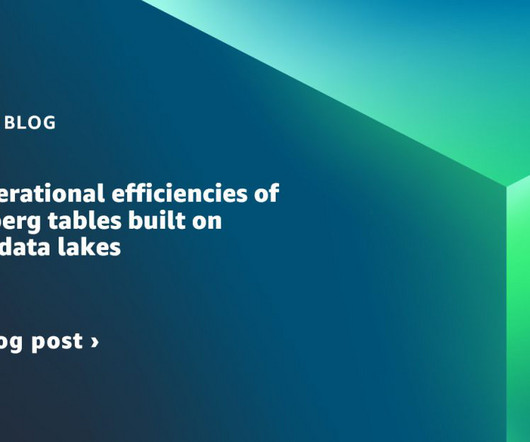Improve operational efficiencies of Apache Iceberg tables built on Amazon S3 data lakes
AWS Big Data
MAY 24, 2023
When you build your transactional data lake using Apache Iceberg to solve your functional use cases, you need to focus on operational use cases for your S3 data lake to optimize the production environment. You can use either the AWS Glue Data Catalog (recommended) or a Hive catalog for Iceberg tables.













Let's personalize your content